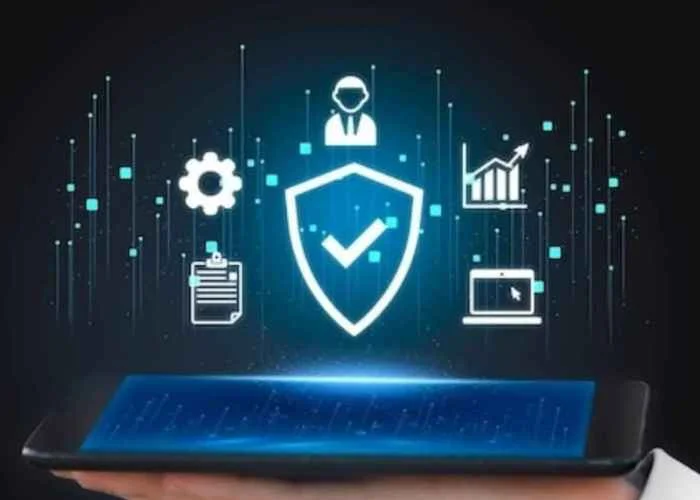Enhancing Security and Efficiency : Document Verification with OCR Technology

In an era driven by digital transformation, the need for secure and efficient document verification processes has become paramount. Businesses across various industries, from finance to healthcare, are increasingly turning to cutting-edge technologies to streamline their operations and enhance security. One such technology that has gained prominence in document verification is Optical Character Recognition (OCR). This blog explores the significance of OCR technology in document verification, its applications, benefits, and the impact it has on both businesses and consumers.
Understanding OCR Technology:
Optical Character Recognition is a technology that converts different types of documents, such as scanned paper documents, PDFs, or images captured by a digital camera, into editable and searchable data. OCR technology plays a crucial role in document verification by extracting text information from documents and converting it into machine-readable data.
Applications of OCR in Document Verification:
Identity Verification :
- OCR technology is widely employed in identity verification processes. Whether it's verifying a user's identity during account creation or conducting KYC (Know your customer) Check, OCR enables the extraction of relevant information from identity documents such as passports, driver's licenses, and ID cards.
Financial Transactions :
- In the financial sector, OCR is instrumental in expediting processes like loan applications and account openings. By automatically extracting data from financial documents, OCR reduces the risk of manual errors and enhances the overall efficiency of these operations.
Healthcare Documentation :
- Healthcare organizations leverage OCR to process vast amounts of patient records, medical forms, and insurance documents. This not only accelerates administrative tasks but also ensures accuracy in data entry, minimizing the possibility of errors in patient care.
Legal Document Management :
- Law firms and legal departments benefit from OCR in managing and analyzing legal documents. This includes the extraction of relevant information from contracts, court documents, and case files, facilitating quick access to critical data.
Automated Data Entry :
OCR technology plays a pivotal role in automating data entry tasks. Instead of manually inputting information from documents into databases, OCR can swiftly and accurately extract the required data, reducing the time and effort involved.
Benefits of OCR in Document Verification
Time Efficiency:
- OCR significantly speeds up document processing times compared to manual data entry. This is particularly valuable in industries where quick and accurate document verification is crucial.
Accuracy:
- By minimizing human intervention, OCR reduces the risk of errors in document verification. This is especially important in sectors like finance and healthcare, where precision is paramount.
Cost Savings:
- Automating document verification through OCR technology translates into cost savings for businesses. The reduction in manual labor hours and the associated costs contribute to a more efficient and economical workflow.
Enhanced Security:
- OCR technology enhances document security by providing a reliable means of verifying the authenticity of documents. This is crucial in preventing identity theft and fraud, offering an additional layer of protection for businesses and their customers.
Improved Customer Experience:
- Streamlining document verification processes through OCR contributes to an improved customer experience. Faster and more accurate verification results in quicker service delivery and increased customer satisfaction.
Challenges and Considerations:
While OCR technology offers numerous advantages, it's essential to acknowledge and address potential challenges:
Language and Format Variability:
- OCR systems may face challenges when dealing with documents in various languages or non-standard formats. Continuous improvement and training are necessary to handle diverse document types.
Security Concerns:
- As with any technology, OCR introduces security considerations. Businesses must implement robust security measures to safeguard the sensitive data being processed through OCR systems.
Integration with Existing Systems:
- Seamless integration of OCR technology with existing systems and workflows can be a complex task. Careful planning and consultation with IT experts are crucial to ensure a smooth transition.
The Future of OCR in Document Verification:
As technology continues to evolve, the future of OCR in document verification looks promising. Advancements in machine learning and artificial intelligence are expected to enhance OCR capabilities, making it even more accurate and versatile. Additionally, increased integration with blockchain technology may further bolster the security aspects of document verification, providing immutable records of transactions and verifications.
In conclusion, OCR technology has revolutionized document verification processes, offering a powerful tool for businesses seeking efficiency, accuracy, and security. By embracing OCR, organizations can streamline operations, reduce costs, and enhance the overall experience for both businesses and their customers. As we move forward, the continued development of OCR technology promises to shape the future of document verification, bringing about even more sophisticated and effective solutions for the challenges that lie ahead.
